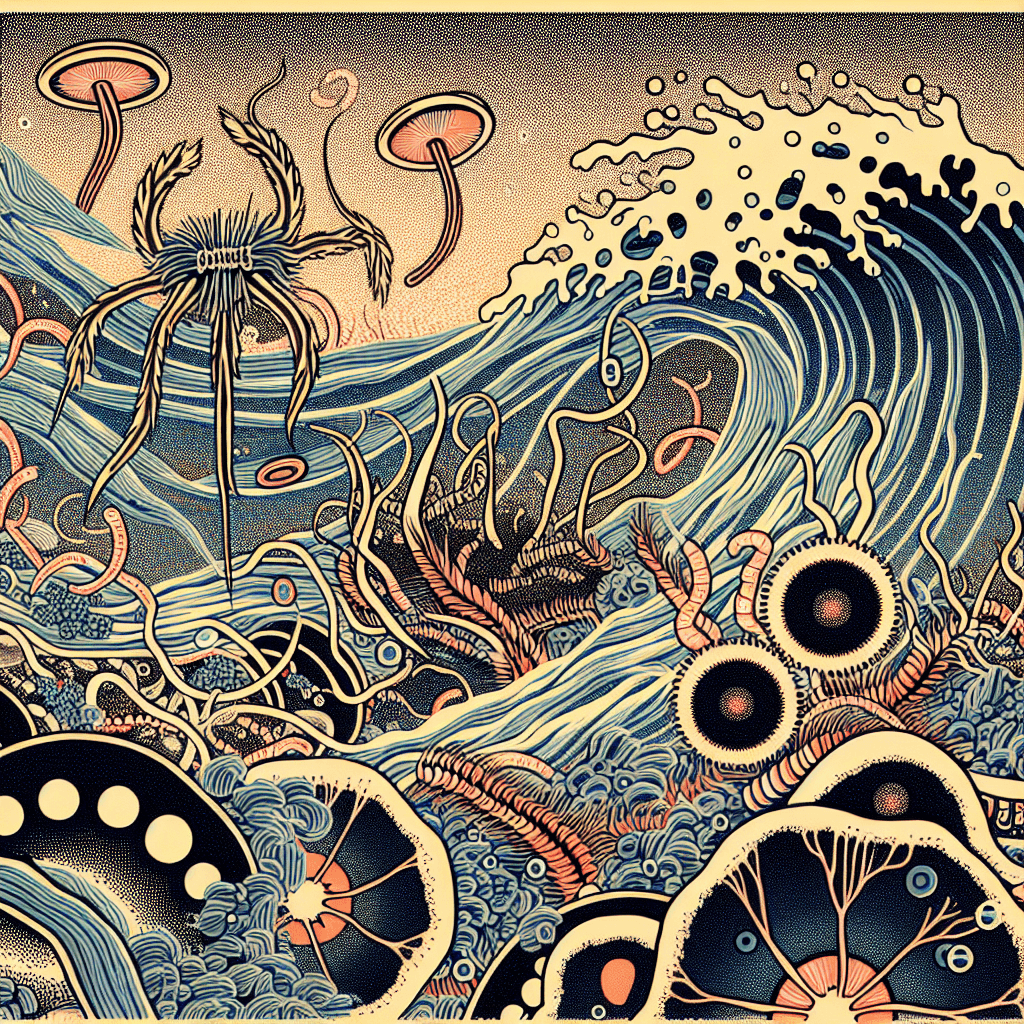Unveiling the Parasite: The Science Behind *Toxoplasma gondii*-1-2
syndu | Oct. 3, 2024, 8:29 p.m.

Unveiling the Parasite: The Science Behind Toxoplasma gondii
Introduction
Toxoplasma gondii (T. gondii) is a fascinating protozoan parasite that has intrigued scientists for decades due to its complex life cycle and its ability to infect a wide range of warm-blooded animals, including humans. This blog post delves into the biology and life cycle of T. gondii, exploring how it affects both feline and human hosts, and the implications of its widespread presence in the environment.
Understanding Toxoplasma gondii
The Life Cycle of T. gondii
Toxoplasma gondii has a unique and intricate life cycle that involves multiple hosts. The parasite's life cycle can be divided into two main phases: the sexual phase, which occurs in cats, and the asexual phase, which occurs in a variety of intermediate hosts, including humans.
1. Definitive Hosts: Cats
- Cats, both domestic and wild, are the only definitive hosts where T. gondii can complete its sexual reproduction. When a cat ingests tissue cysts from infected prey, the parasite undergoes sexual reproduction in the cat's intestines, producing millions of oocysts.
- These oocysts are shed in the cat's feces, contaminating the environment. They can remain infectious in soil, water, and vegetation for months, posing a risk to other animals and humans.
2. Intermediate Hosts: Humans and Other Animals
- Intermediate hosts become infected by ingesting oocysts from contaminated environments or consuming undercooked meat from infected animals. In these hosts, T. gondii undergoes asexual reproduction, forming tissue cysts in various organs, including the brain and muscles.
- These cysts can remain dormant for years, potentially reactivating if the host's immune system becomes compromised.
Transmission Pathways
Environmental Contamination: Oocysts shed by cats can contaminate soil and water sources, leading to widespread environmental exposure. This contamination is a significant route of transmission for humans and other animals.
- Foodborne Transmission: Consumption of undercooked or contaminated meat from infected animals is a common route of human infection. Proper cooking and food handling practices are essential to prevent transmission.
- Congenital Transmission: Pregnant women who become infected with T. gondii can transmit the parasite to their unborn child, potentially leading to severe health complications.
Biological Impact on Hosts
Effects on Feline Hosts
In cats, T. gondii infection is usually asymptomatic, but it plays a crucial role in the parasite's life cycle by facilitating the production and spread of oocysts.
Effects on Human Hosts
In humans, T. gondii infection often causes mild flu-like symptoms or no symptoms at all. However, in immunocompromised individuals and pregnant women, the infection can lead to severe complications, including neurological disorders and congenital toxoplasmosis.
Recent studies have also explored the potential cognitive and behavioral effects of chronic T. gondii infection, suggesting links to mental health conditions such as schizophrenia and bipolar disorder.
Conclusion
Toxoplasma gondii is a remarkable parasite with a complex life cycle that highlights the intricate interplay between biology and the environment. Understanding the science behind T. gondii is crucial for managing the challenges it poses to human and animal health. By appreciating the role of cats as definitive hosts and recognizing the various transmission pathways, we can better implement strategies for prevention and care.
As research continues to uncover the mysteries of T. gondii, it is essential to remain vigilant and proactive in mitigating its potential impacts on human health. Public health initiatives focusing on hygiene, food safety, and responsible pet ownership are vital in reducing the risk of infection and promoting well-being. Through these efforts, we can foster a harmonious coexistence with our feline companions and safeguard human health against this ancient parasite.








